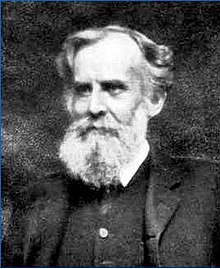Venn diagrams were introduced in 1880 by John Venn (1834–1923) in a paper entitled On the Diagrammatic and Mechanical Representation of Propositions and Reasonings in the “Philosophical Magazine and Journal of Science”, about the different ways to represent propositions by diagrams.[1] The use of these types of diagrams in formal logic, according to Ruskey and M. Weston, is “not an easy history to trace, but it is certain that the diagrams that are popularly associated with Venn, in fact, originated much earlier. They are rightly associated with Venn, however, because he comprehensively surveyed and formalized their usage, and was the first to generalize them”.[2]
Venn himself did not use the term “Venn diagram” and referred to his invention as “Eulerian Circles.”[1] For example, in the opening sentence of his 1880 article Venn writes, “Schemes of diagrammatic representation have been so familiarly introduced into logical treatises during the last century or so, that many readers, even those who have made no professional study of logic, may be supposed to be acquainted with the general nature and object of such devices. Of these schemes one only, viz. that commonly called ‘Eulerian circles,’ has met with any general acceptance…”[3] The first to use the term “Venn diagram” was Clarence Irving Lewis in 1918, in his book “A Survey of Symbolic Logic”.[2]
Venn diagrams are very similar to Euler diagrams, which were invented by Leonhard Euler (1708–1783) in the 18th century.[note 1] M. E. Baron has noted that Leibniz (1646–1716) in the 17th century produced similar diagrams before Euler, but much of it was unpublished. She also observes even earlier Euler-like diagrams by Ramon Lull in the 13th Century.[4]
In the 20th century, Venn diagrams were further developed. D.W. Henderson showed in 1963 that the existence of an n-Venn diagram with n-fold rotational symmetry implied that n was a prime number.[5] He also showed that such symmetric Venn diagrams exist when n is 5 or 7. In 2002 Peter Hamburger found symmetric Venn diagrams for n = 11 and in 2003, Griggs, Killian, and Savage showed that symmetric Venn diagrams exist for all other primes. Thus rotationally symmetric Venn diagrams exist if and only if n is a prime number.[6]
Venn diagrams and Euler diagrams were incorporated as part of instruction in set theory as part of the new math movement in the 1960s. Since then, they have also been adopted by other curriculum fields such as reading.[7]
Here is the master himself …


